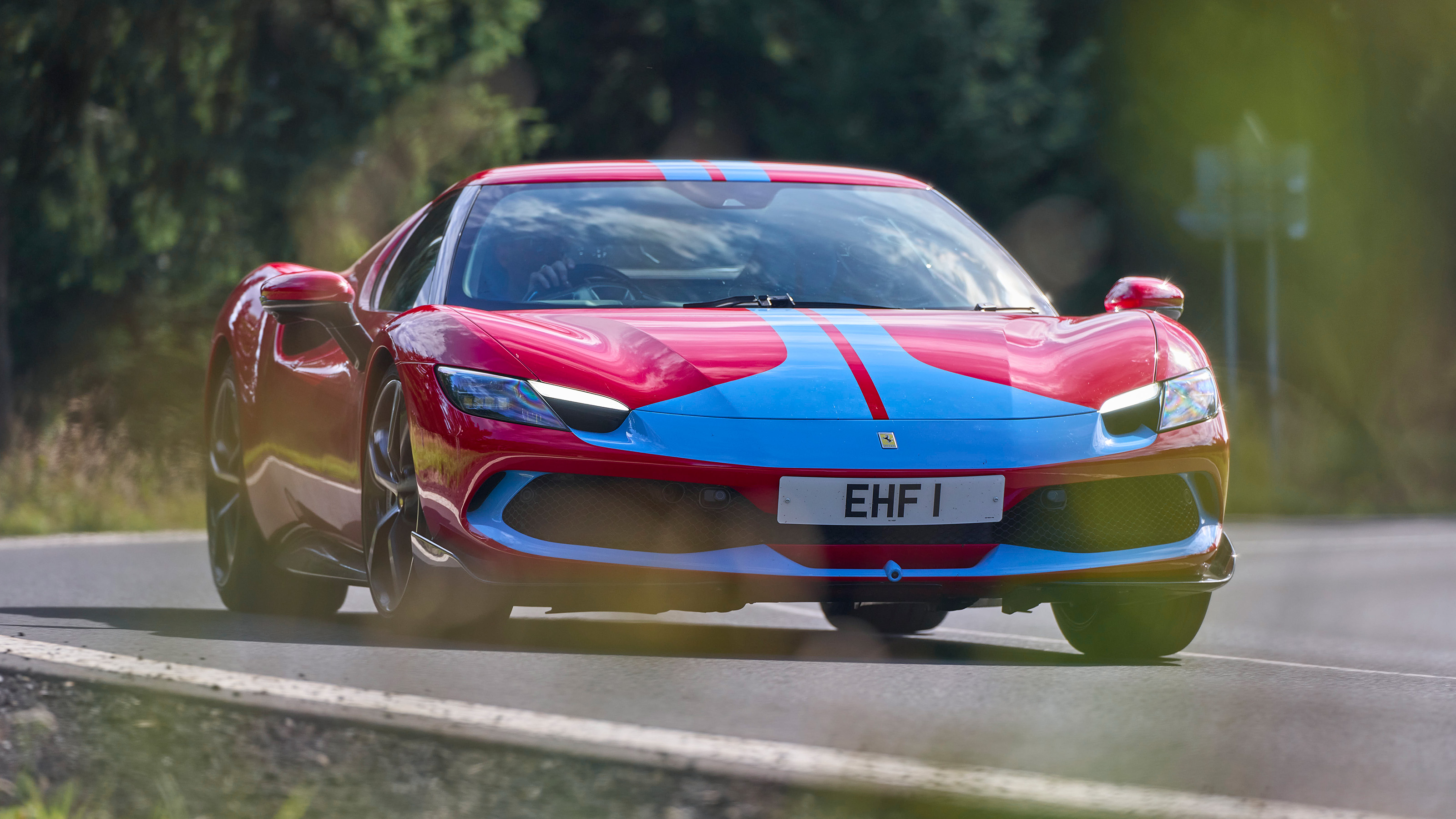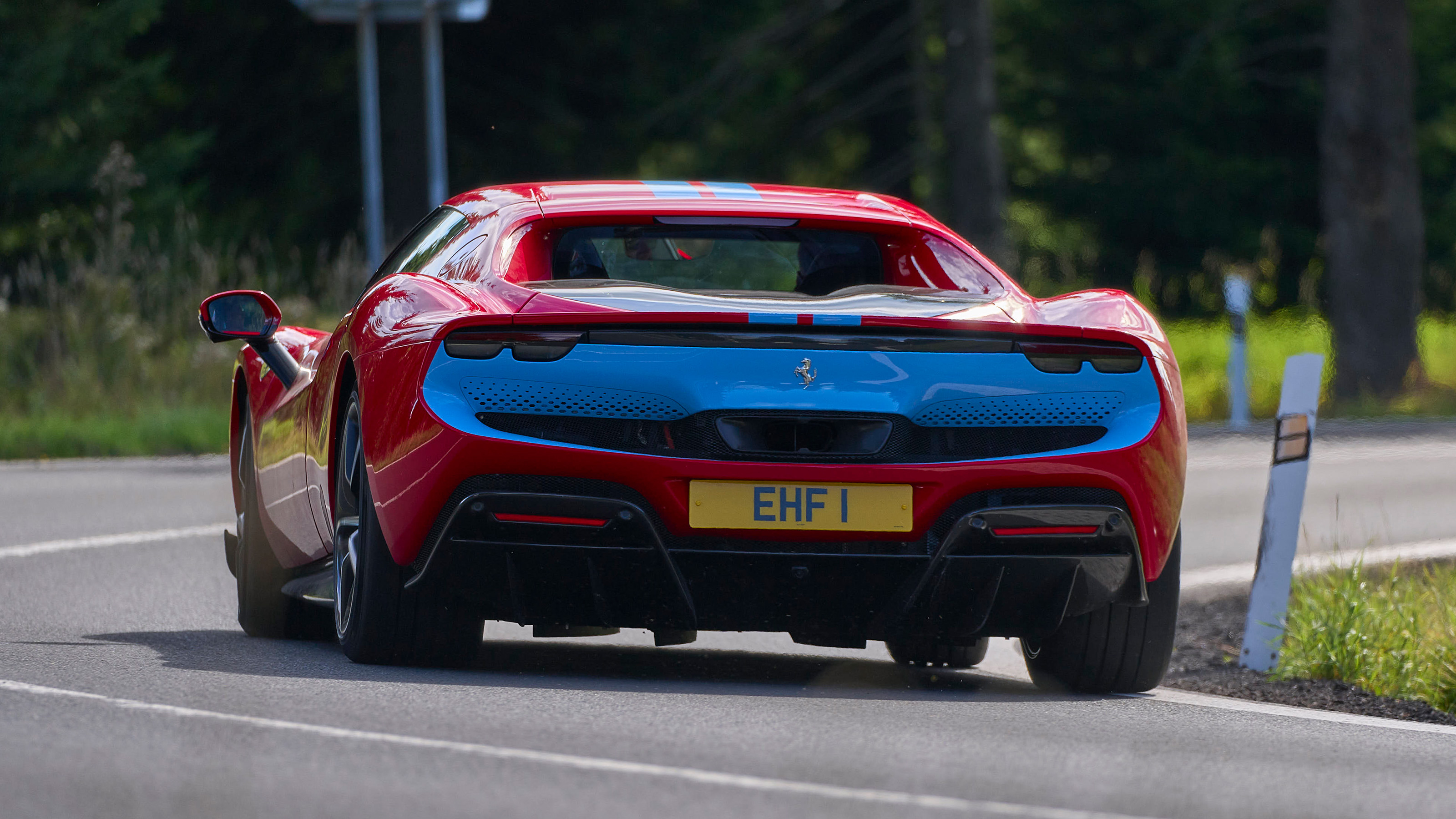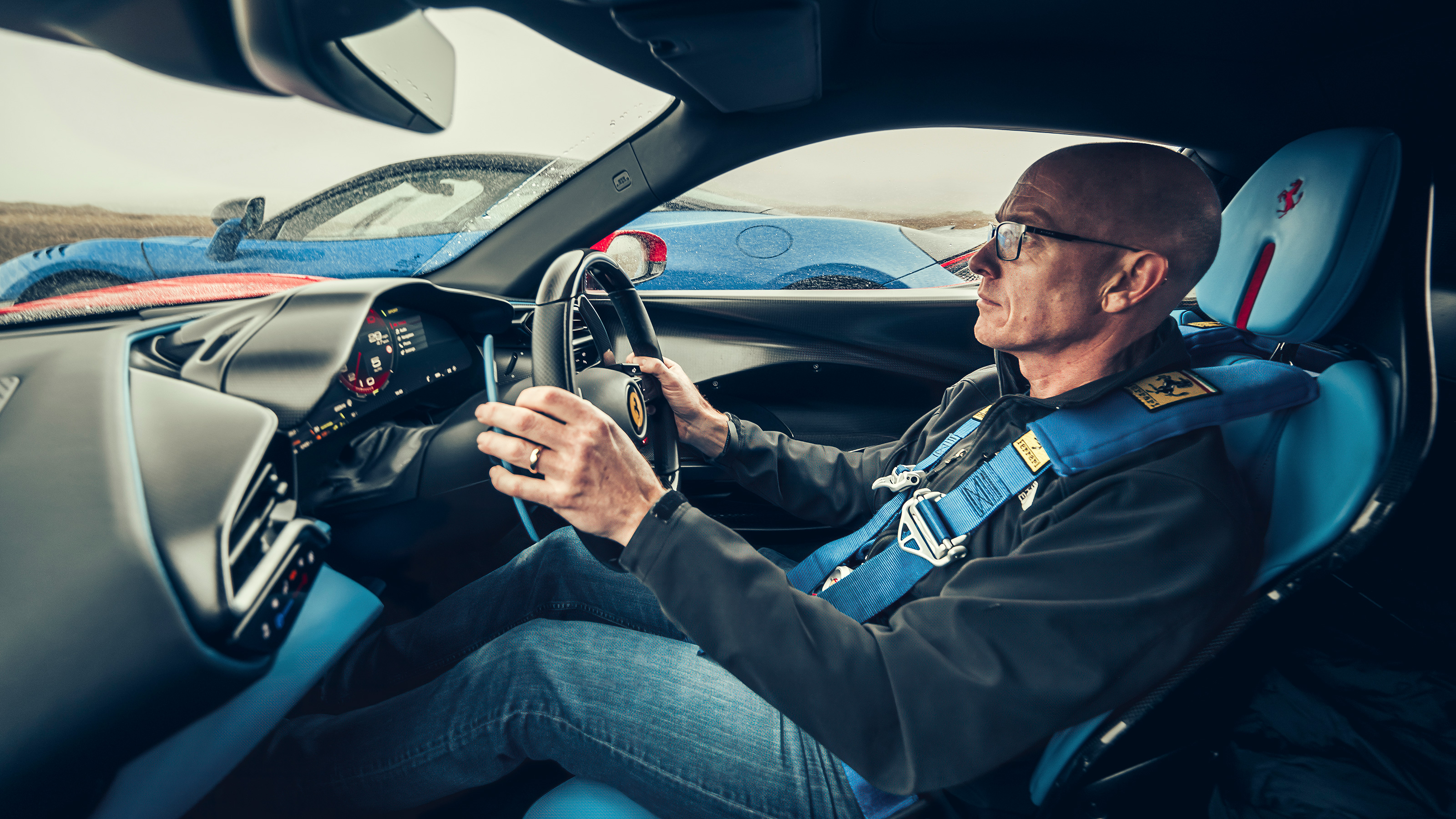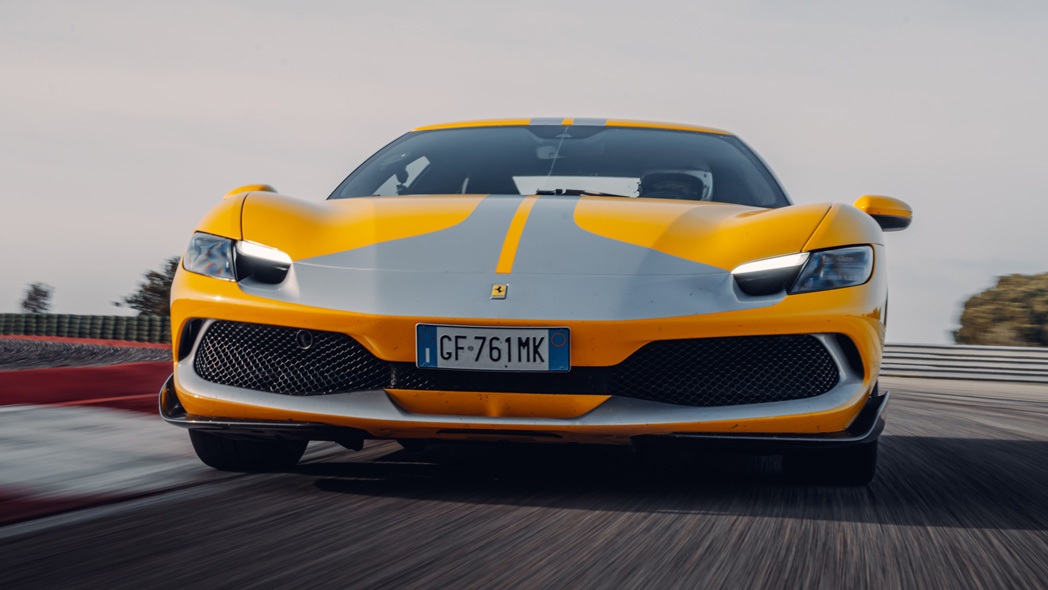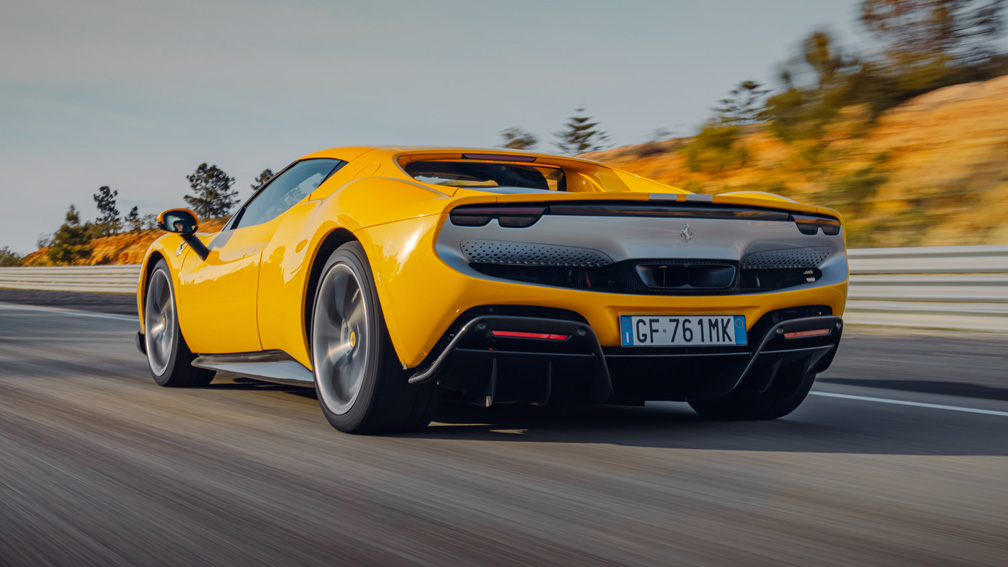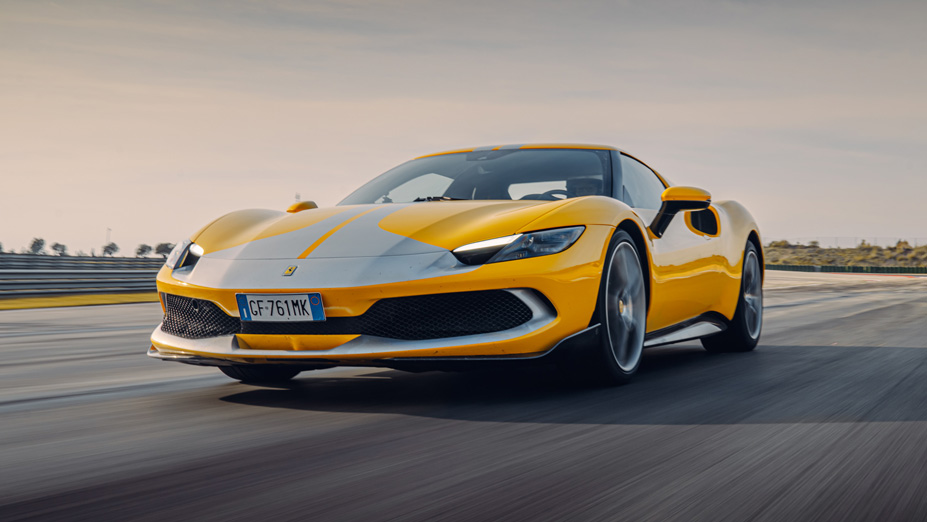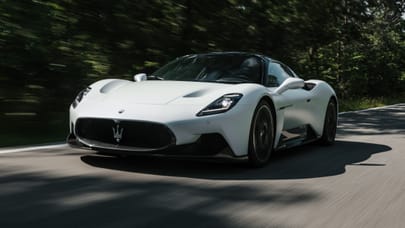
Ferrari 296 GTB review
Good stuff
Hybrid V6 powertrain is a real high point, thrilling at all speeds, beautiful to behold, sheer agility
Bad stuff
Haptic switchgear is deeply irritating, cabin isn’t much of a step forwards, Assetto Fiorano pack adds nothing worth mentioning
Overview
What is it?
A huge accomplishment. A successor to the legendary Dino. A genius bit of technical development. A warning shot across McLaren’s bows. Proof that downsizing can improve the breed. Evidence that Ferrari has fully got its head around hybrid and electricity. Any and all are true.
This is the Ferrari 296 GTB. It is a deeply, furiously complex car. It never feels like that to drive. Neither on road, nor on track. Ferrari claimed it wasn’t a direct replacement for the £40,000 cheaper F8 Tributo (eventually canned in the summer of 2023).
But it slots into the mid-engined ‘everyday’ Ferrari lineage that started with the 308 47 years ago and has continued without interruption – and with some legendary highlights, including the 458 Speciale – ever since.
Take me on a quick tech tour...
It still has an aluminium chassis (hardly surprising when Ferrari has its own foundry on site in Maranello), with two seats ahead of the powerplant. Down behind the seats, slotted under the parcel shelf, is a 7.45kWh, 70kg battery pack. That feeds a 165bhp electric motor (it’s the rough dimensions of a frying pan) that’s sandwiched between an all-new (and totally not Maserati MC20-related) V6 and eight-speed twin clutch gearbox.
The SF90 had another pair of electric motors for the front wheels, yielding 4WD and near-zero bootspace, but this single motor is the 296’s only one. It can power the car alone, and at up to 84mph. But what it’s best at is allowing it to crawl quietly, to go full Victorian school child and be seen but not heard. More on that later.
What about the core of any Ferrari: the engine?
It’s a bit of a revolution: Ferrari’s first ever production V6. The Dino was a sub-brand, remember. Look deep and you’ll spot the famous red crackle covers, but they’ve been prised further apart, the banks opened out to 120 degrees. Pride of place in the engine bay now goes to a curvaceous burnished metal heat plate.
Under it, nestling in the ‘hot vee’ of the cylinder banks, lie a pair of IHI turbos shared with the SF90. The turbines at both ends are slightly smaller, so they can spin faster (180,000rpm), run more efficiently (by 24 per cent) and respond quicker.
End result?
This – we’re tempted to say entry level – Ferrari has a grand total of 819bhp, 165bhp of e-thrust supplemented by another 654bhp from the twin turbo V6. What it doesn’t feel – thankfully and amazingly – is particularly turbocharged. The F8’s V8 does, coming across as a mighty force generator, more impressive in the mid-range than the top end. Not this one. It soars to 8,500rpm, and gives you a reason to go there, max torque only arriving at 6,250rpm.
Nor does it come across as particularly electrified. The turbos and e-motor are there to enhance the V6, not to be the stars of the show in their own right. Of course there’s masses of zero lag bottom end grunt, but the way it’s blended is genius. You can deceive yourself into thinking you’re driving an especially healthy naturally aspirated engine.
And it sounds good too, higher pitched and richer toned than the F8 Tributo’s flat V8 blare, more fizzy and energetic. Ferrari claims its engineers nicknamed it the piccolo V12 – little V12 – it doesn’t have the trumpeting baroque glory, the proud Roman pomp of an 812 in majestic full flow, but we can see where they’re coming from.
How is it to drive?
On road it’s smooth, intimate and connected. The steering’s super fast, but Ferrari is on top of that now, so trust in the front end comes naturally. It’s not super-rich in road detail, but it’s massively satisfying to turn: the weighting, the resistance, the connection: all are superb. Body control on smooth surfaces is immaculate, traction effortless, everything operates in balance and harmony, it never feels heavy or caught out, it just carries you along, wants to entertain and amuse. Alert and playful.
And when you get to a village you can press the haptic eD button on the lower left of the steering wheel and have a claimed 15 miles of e-range. OK, it’s more like 10, but the point stands. You can go into stealth mode and roll silently through. Supercars are attention seekers, heard before they’re seen, but here’s that extra dimension that electricity brings – soundless progress and a more accepting audience.
And on track?
The gap between silent pottering and track ripping is a gulf of epic proportions. Hard to believe it’s the same car, in fact. OK, it wasn’t since Ferrari insisted we drove a different car fitted with the £25,920 Assetto Fiorano pack on track at Monteblanco, but the way it rips around, making the driver feel like a hero even though they're protected by an electronic bubble (6w-CDS, the car’s central dynamic brain, marshals ABS individually to each wheel, predicts grip and monitors all movement across three axes) is amazing.
The 296 is corralled by quite the most dizzying bunch of acronyms I’ve ever come across. But no one does this stuff better than Ferrari, and they have never done it better than this, a car that dances so exquisitely to your tune. It’s an adrenaline rush because the car feels organic and natural even though underneath it’s anything but. Complexity? Completed it, mate.
Any drawbacks?
We struggle with the SF90-influenced cabin. The screen control touchpad on the wheel takes concentration and effort, the actions aren’t natural, inputs are delayed. It’s deeply frustrating to use on a daily basis, makes you actively choose not to interact with the car and instead rely on Apple CarPlay… which isn’t well integrated at all. Ferrari needs to get this sorted properly come the facelift.
The design and layout is fine, but hasn’t moved the game on that much. It comes across as a bit bare and empty, doesn’t wrap around the driver much. You can at least use this one for weekends away. There’s a little wind noise, but you’ll cope because eighth is long and the firm seats are well shaped.
What does it go up against?
McLaren's bound to have had some sleepless nights about this. It claims – and we agree – that the Artura (670bhp and £182,500) isn’t a direct rival despite the fact it shares a very similar technical package to this Ferrari. The 750S is the comparable McLaren: same money as the 296, just as quick, and when we got the two together came out narrowly ahead, even though the styling refresh over the 720S barely moves the needle.
It is just about the only rival supercar worth mentioning. The Maserati MC20 is a great road car, but flawed in some areas; Porsche’s 911 Turbo S is a cross-country monster, but doesn’t have the same drama; the Lamborghini Huracan is about to be replaced and the Corvette Z06 – wrongly – isn’t taken seriously enough this side of the Atlantic.
What's the verdict?
This is a supercar from the top drawer. Across the ground it’s devastatingly fast, yet manageable and engaging when not travelling at warp speed. It doesn’t quite have the communication skills of McLaren’s 750S, but the V6 is a thing of beauty, and so’s the car itself: the visor-like windscreen, the buttresses, the 250 LM-inspired side vents.
This is a big step forward: electricity used to add depth and dimension to the supercar experience, to be there when it’s beneficial, but to step back and work in the shadows when it’s not. Perfect. More intimate and engaging than big brother SF90, too. With that they made the tech useable, here they’ve taken it to the next step: made it fun. Make no mistake, this is one of Ferrari’s best mid-engined supercars, up there with the 458.
The Rivals
Trending this week
- 2026 TopGear.com Awards
The very best cars of the year: welcome to the 2026 TopGear.com Awards




